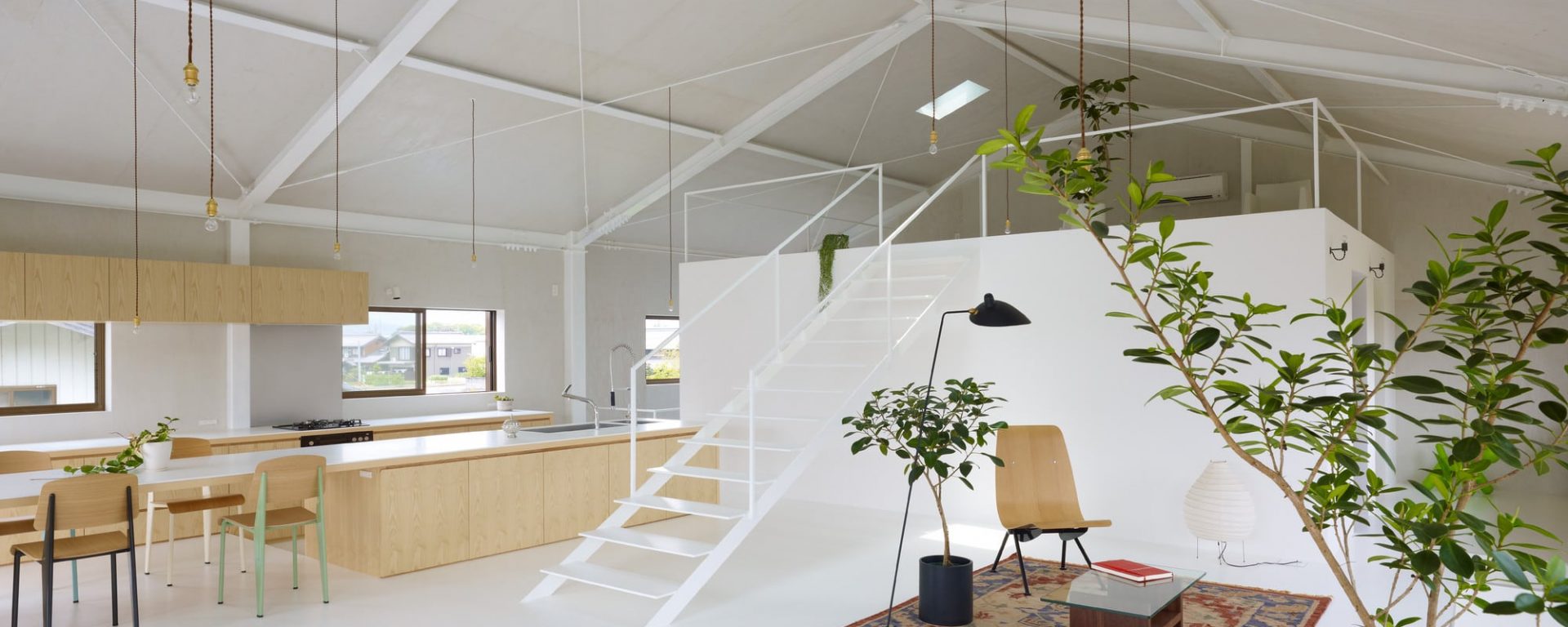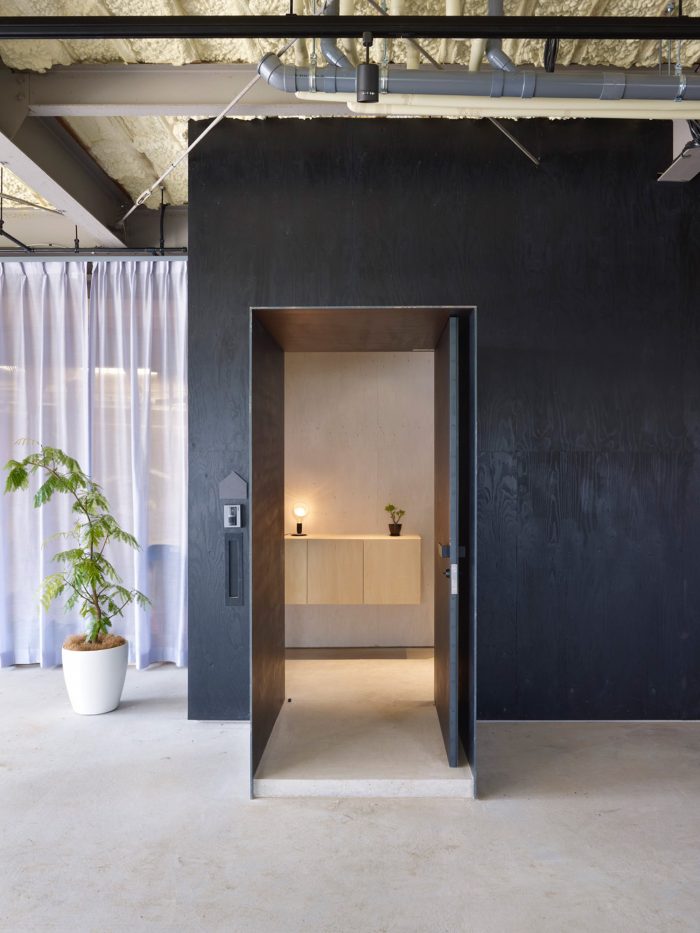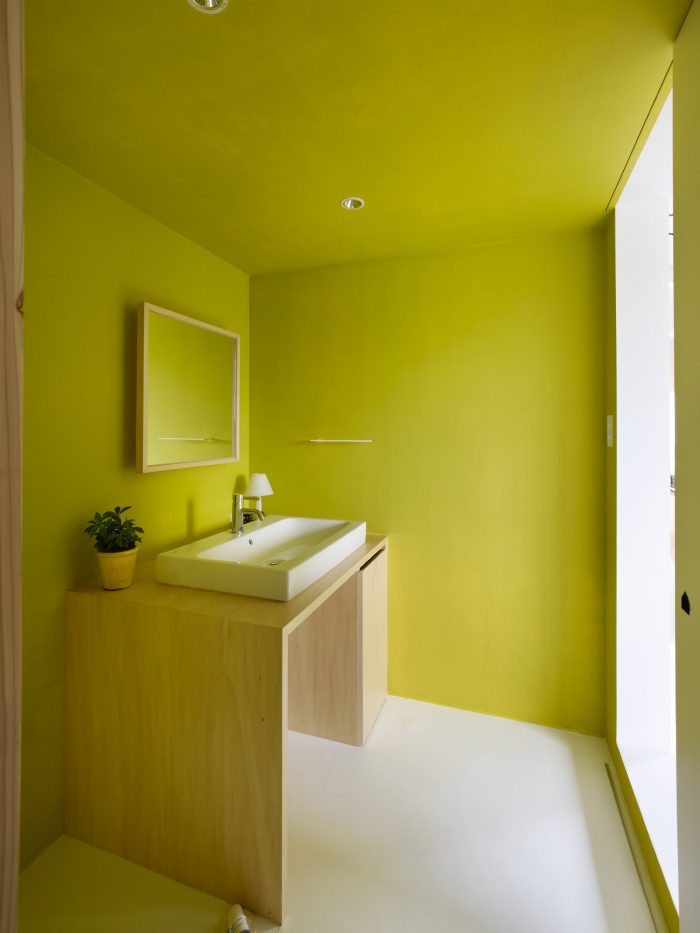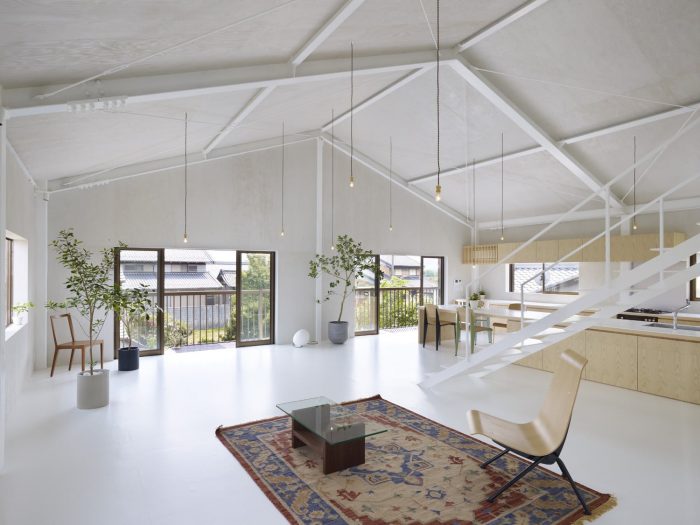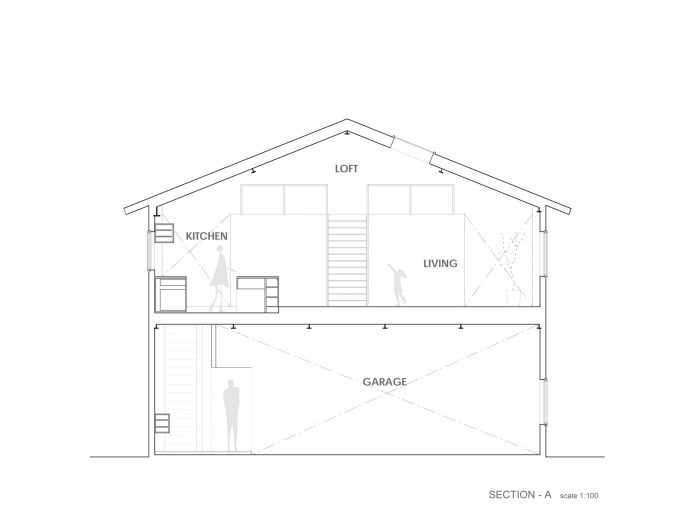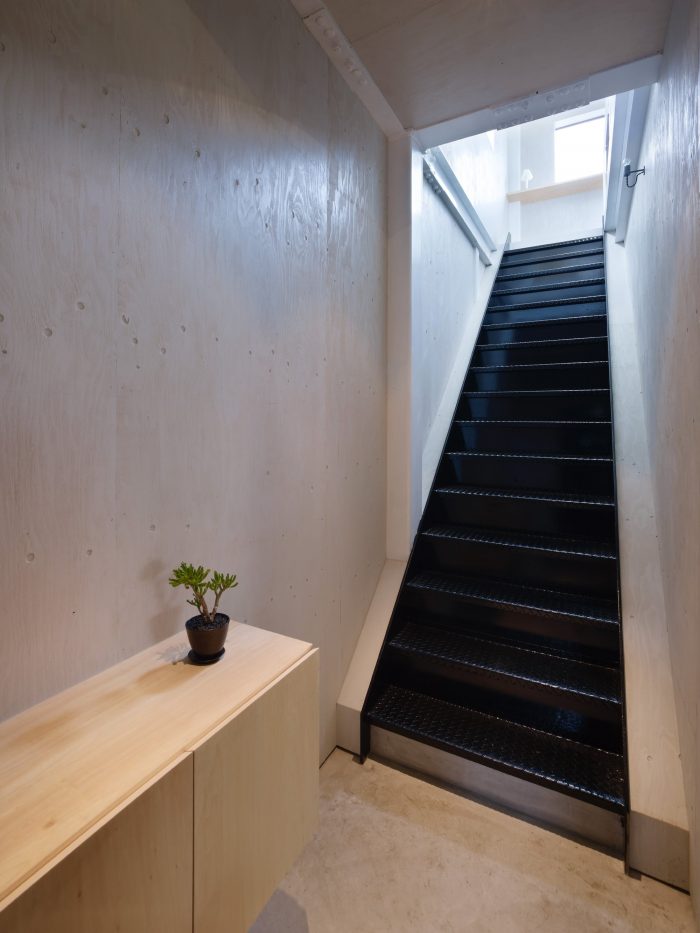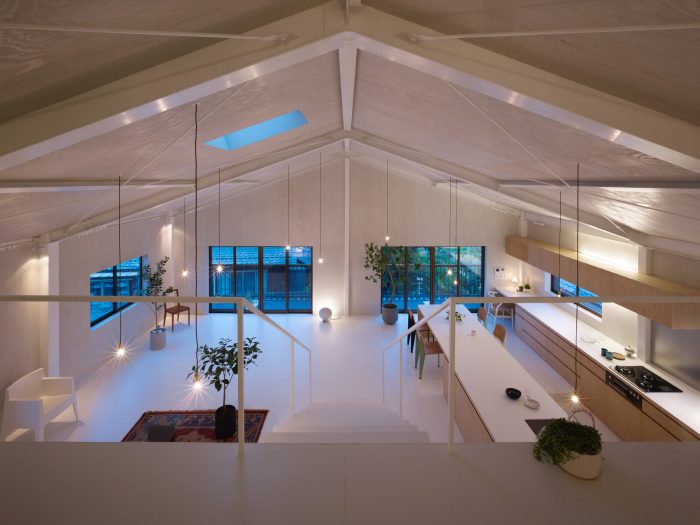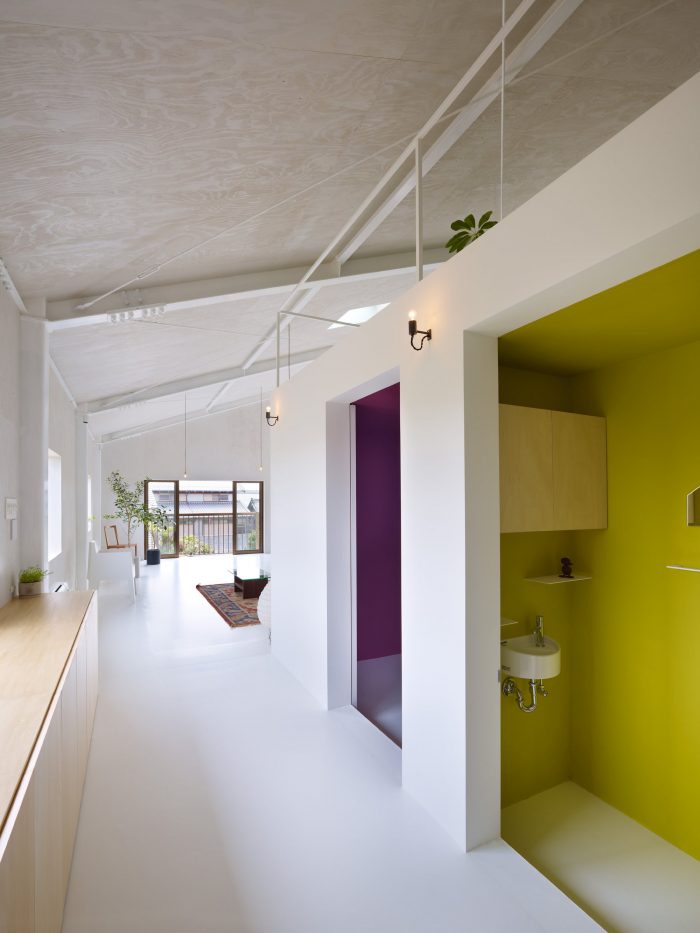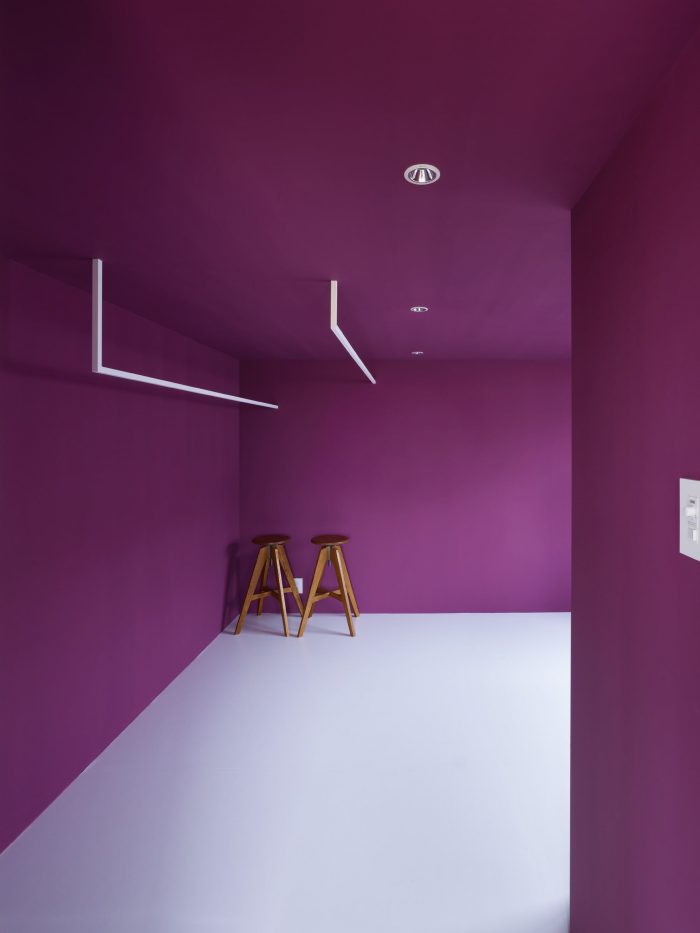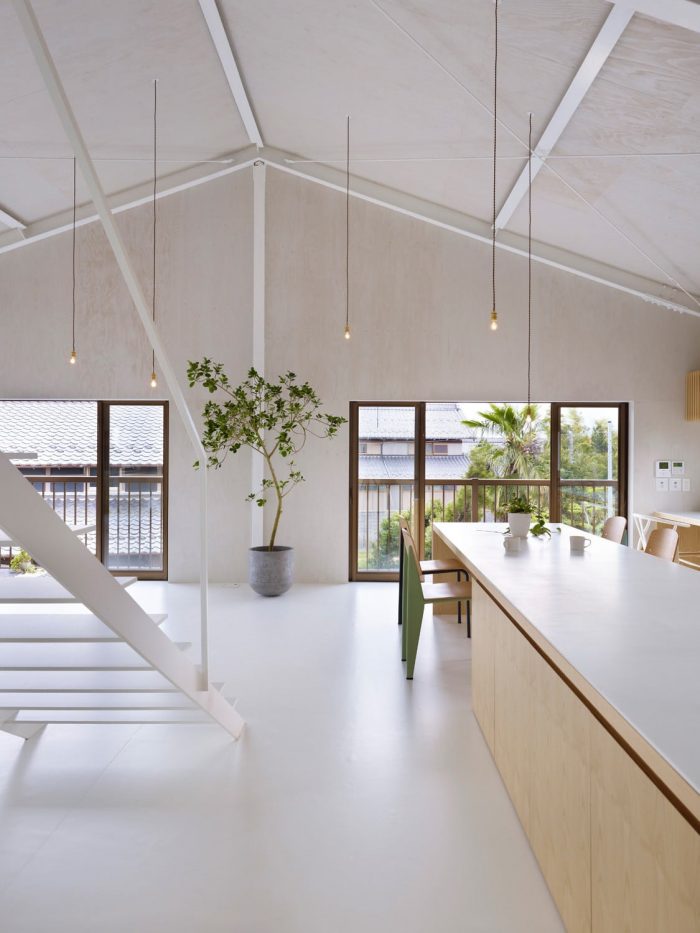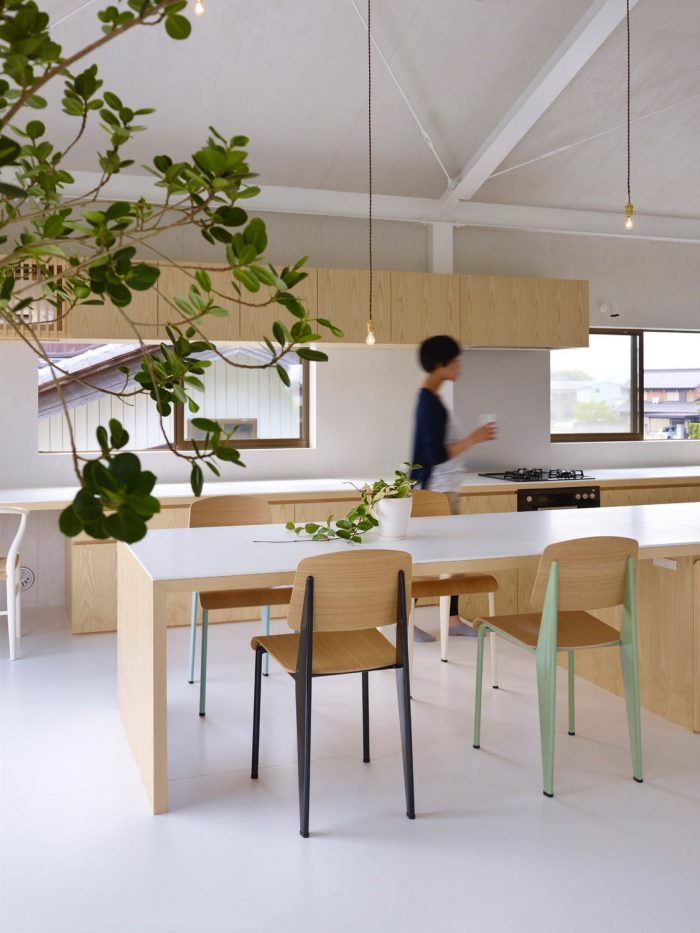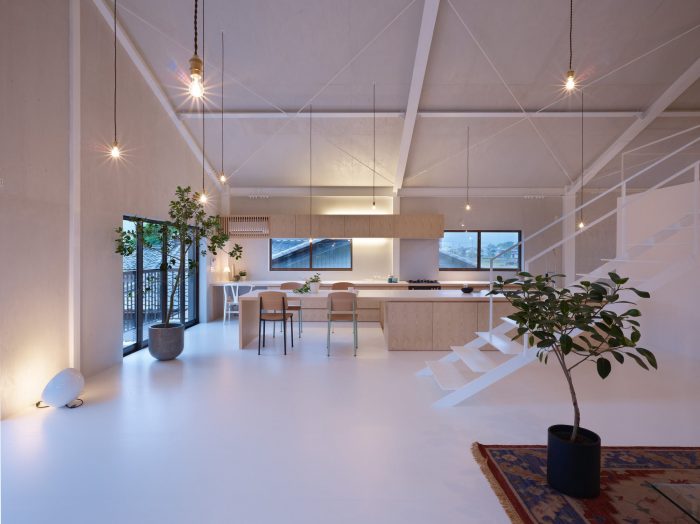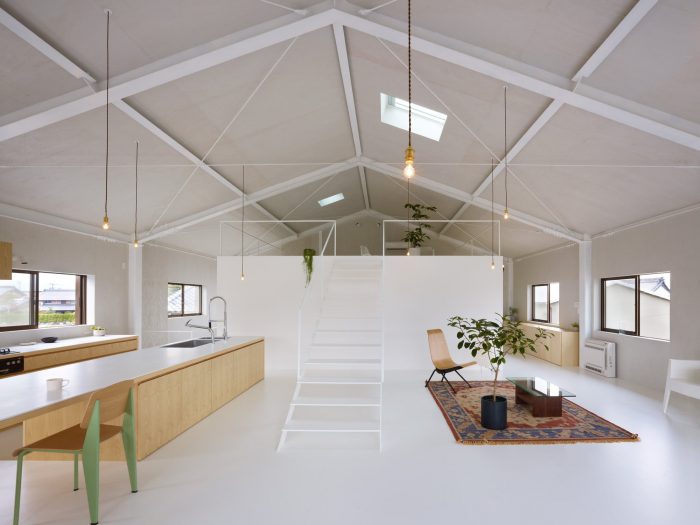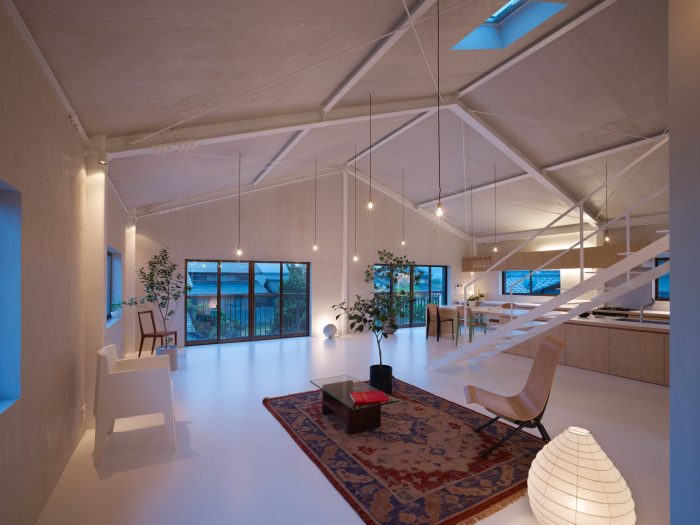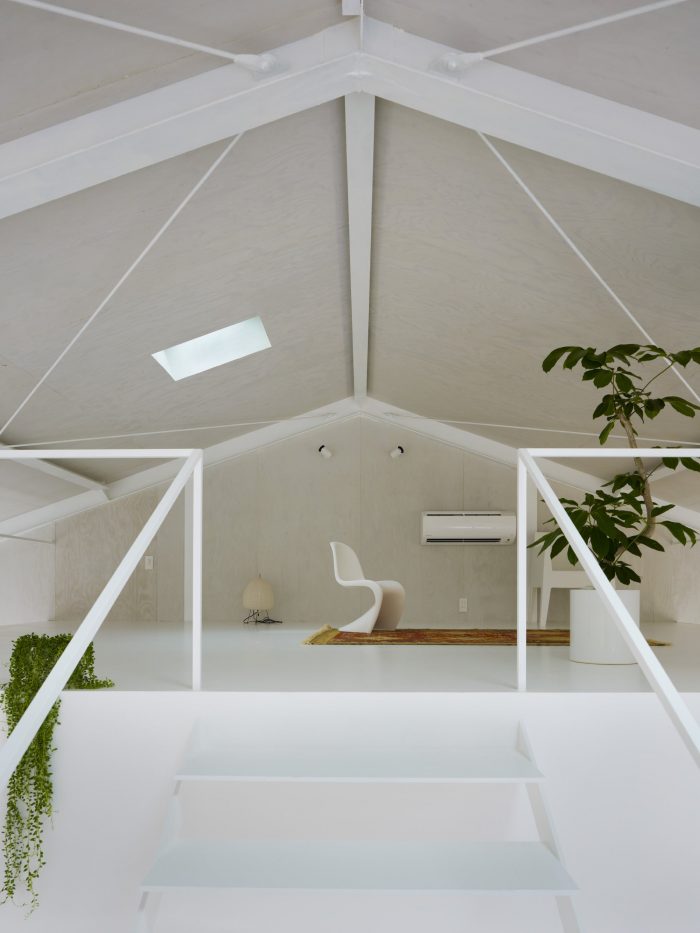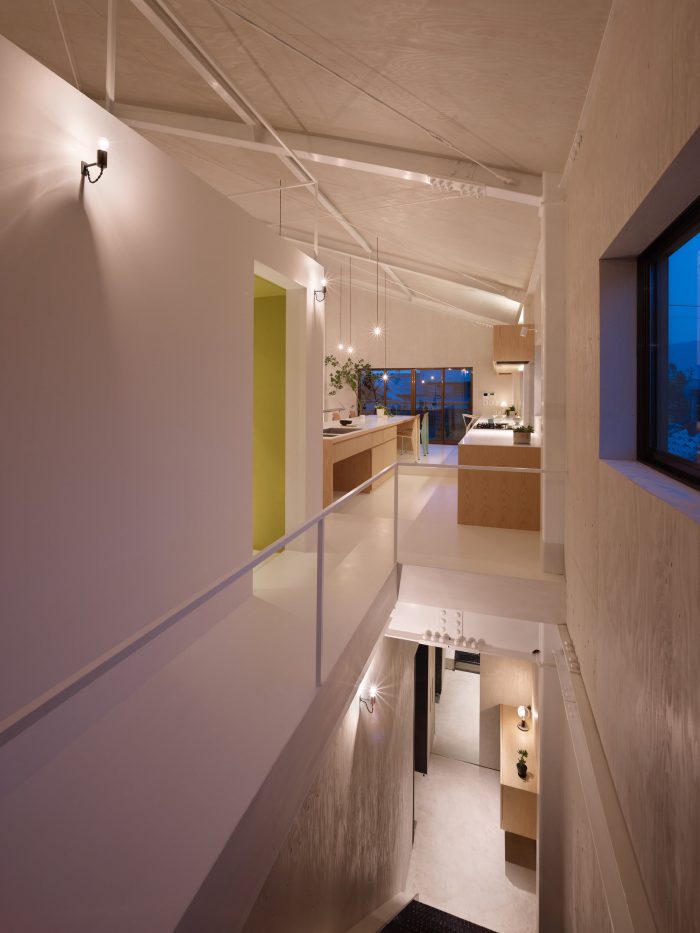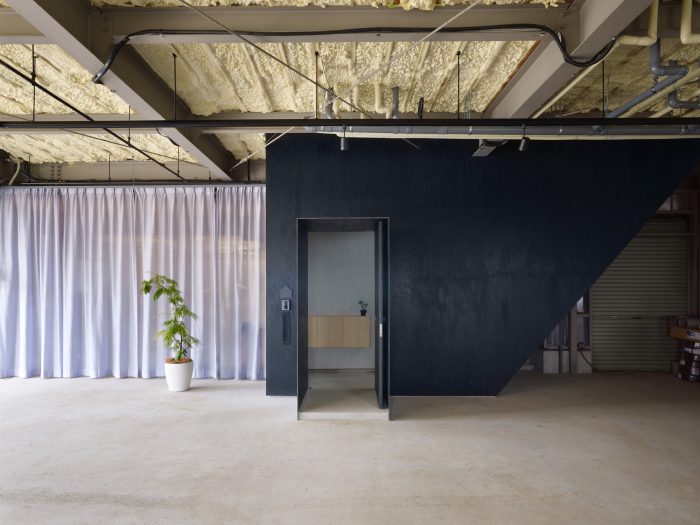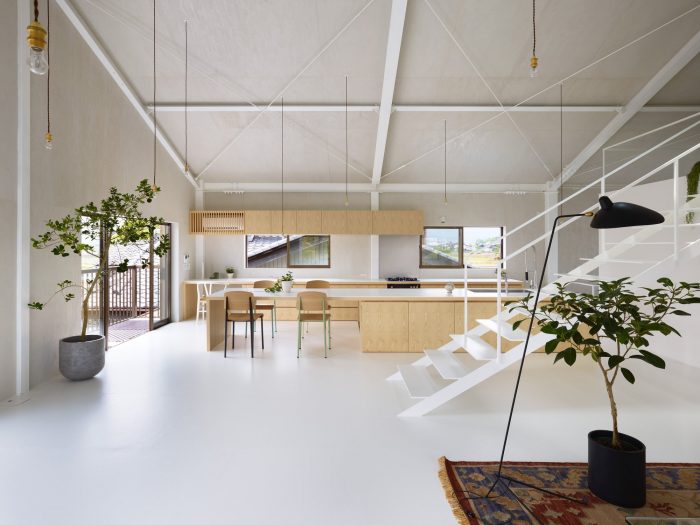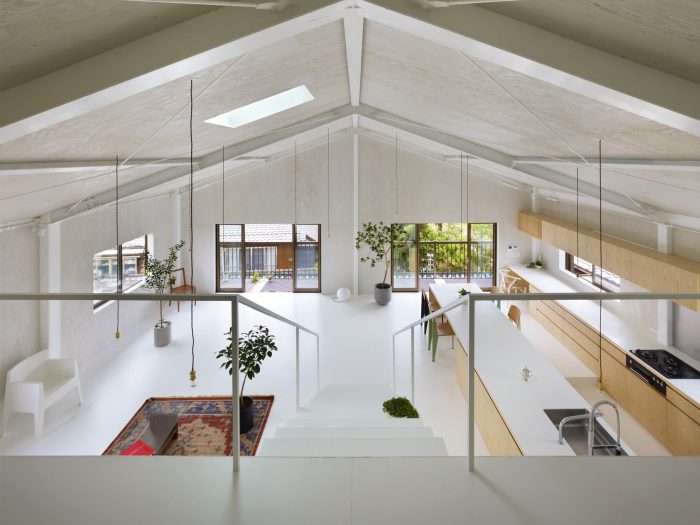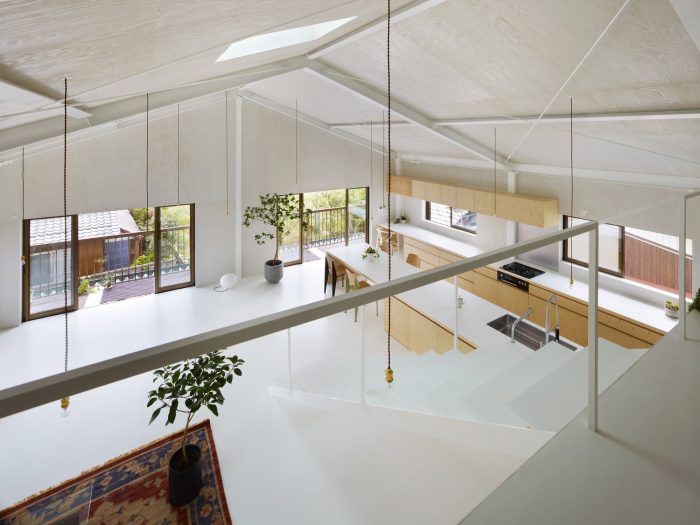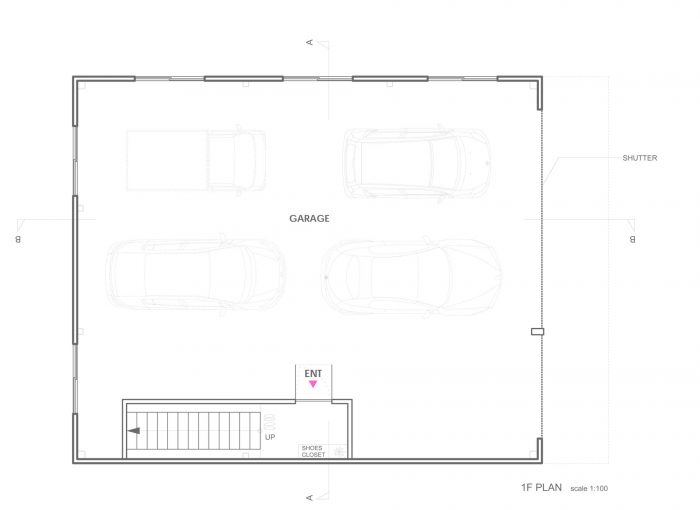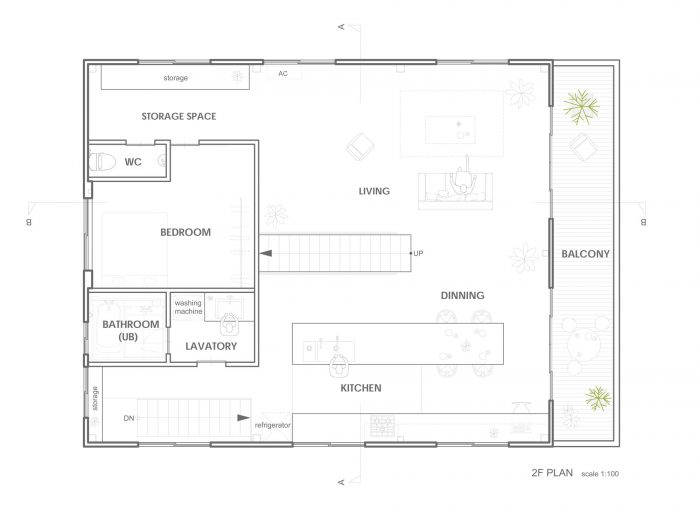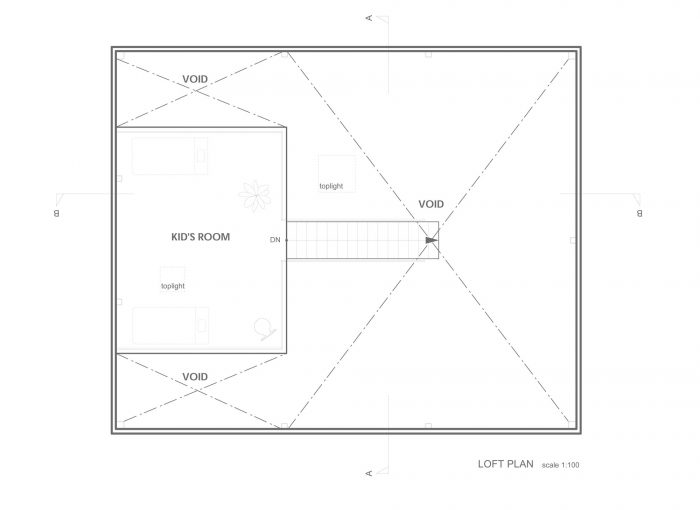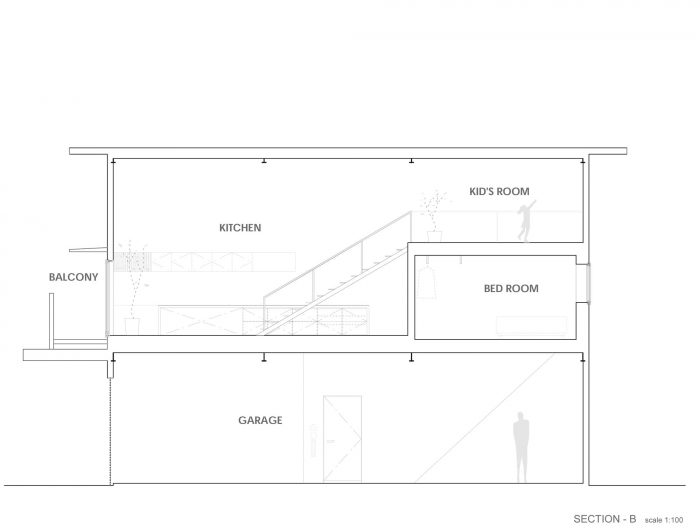我们客户的主要要求之一是要有一个能随时感受到家人存在的生活空间。作为回应,我们设计了一个没有柱子的单间布局,利用了现有仓库的独特特征。
One of our client’s major requirements was for a living space where the presence of the family would always be felt. In response, we devised a single-roomed layout without columns that took advantage of the distinctive features of the existing warehouse.
我们安装了一个大型厨房,以满足这对热爱美食的夫妻的需求。然后,我们将厨房作为一个焦点来构思整个生活空间,并将其他各种活动和功能混合在一起,围绕它展开。在这个单间的空间里,我们还创造了一个盒子状的结构,上面是孩子们的阁楼卧室,里面是包括卧室和浴室的私人住所。
A large kitchen was installed to cater to the needs of the food-loving husband-and-wife couple. We then conceived the entire living space by taking the kitchen as a focal point, with a mix of various other activities and functions unfolding around it. Within this single-roomed space, we also created a box-like structure with a loft bedroom for the children on top of it, and private quarters including a bedroom and bathroom inside it.
为了尽量减少这个巨大空间内的热量损失,我们在墙壁、地板和天花板上加了一层100毫米的聚氨酯泡沫,同时在起居室里安装了一个热电联产装置,用来加热水和提供地板加热。所有的开口都是利用现有的门窗来设计的,而玻璃板都进行了双层玻璃的处理,以提高绝缘性。
In order to minimize heat loss within this massive space, a 100mm layer of urethane foam was added to the walls, floors and ceiling, while a combined heat and power device was installed in the living room to heat water and provide floor heating. All openings were designed by making use of existing sash windows and doors, while glass panes were all given a double-glazing treatment to improve insulation.
建筑物的外墙被保留下来,以努力与周围的社区融为一体,同时也是出于成本考虑。结果是一个舒适、豪华的住宅,有效地利用了现有的功能,同时也避免了过度的开支。
The façade of the building was left intact in an effort to blend in with the surrounding neighborhood, as well as due to cost considerations. The result was a comfortable, luxurious home that made effective use of existing features while also avoiding excessive expense.
Architects: Airhouse Design Office
Area : 131 m²
Year : 2012
Photographs :Toshiyuki Yano
City:GIFU
Country:Japan

